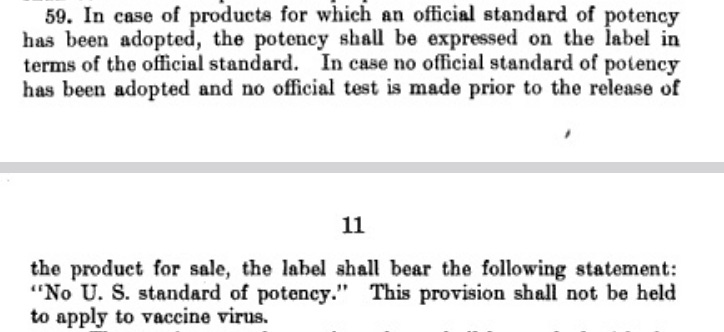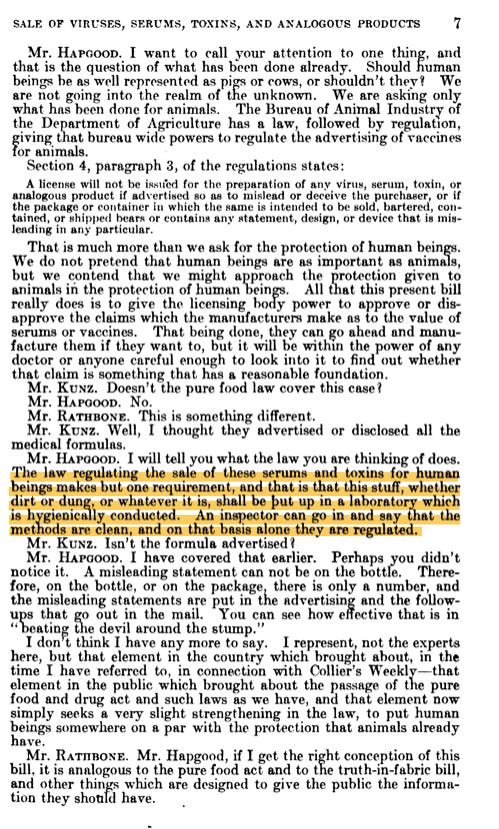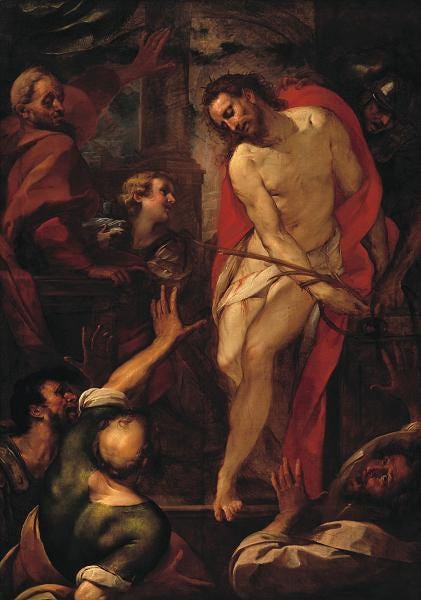Orientation for new readers; American Domestic Bioterrorism Program; Tools for dismantling kill box anti-law
Reading the 1903, 1909 and 1919 PHS/Treasury regulations this morning.
1903.02.21 PHS Treasury Regulations for the Sale of Viruses, Serums, Toxins and Analogous Products
1909.05.11 PHS Treasury Regulations for the Sale of Viruses, Serums, Toxins and Analogous Products
1919.02.12 PHS Treasury Regulations for the Sale of Virues, Serums, Toxins and Analogous Products
It prompted me to look up standard of potency in my files, which led to a few references in the 2016 Coleman paper.
2016 Early Developments in the Regulation of Biologics (Terry S. Coleman, Food and Drug Law Journal)
Coleman:
Under the 1919 regulations, if PHS had not established a potency standard for a product, it had to be labeled "No U.S. standard of potency," [FN 273], a requirement that PHS imposed as a hint to physicians that the product had not been shown to be effective, although PHS admitted that the labeling requirement was legally questionable. [FN 274]
In 1924, a subcommittee of House Committee on the District of Columbia held a series of hearings on H.R. 5845 and two subsequent versions of the bill (7366 and 8619), to amend the Regulation of Sale of Viruses, Serums, Toxins and Analogous Products governed by the 1902 Virus-Toxin act by adding labeling provisions prohibiting false or misleading claims as to therapeutic value.
It was an attempt to bring the Virus-Toxin law more in line with the 1906 Pure Food and Drug Act (governing non-biologically-propagated products used on humans) and the 1913 Virus-Serum-Toxin act governing biological products used on animals.
The text of H.R. 7366 can be found at pp. 54-55 of the Rathbone hearings report.
At the 1924 hearings, speakers were referring to the 1902 enabling law and the 1919 and 1923 versions of the Treasury Department regulations, Provision 59 in each case, on the relationships between labeling, therapeutic claims and potency standards.
1919: “In case of products for which an official standard of potency has been adopted, the potency shall be expressed on the label in terms of the official standard. In case no official standard of potency has been adopted and no official test is made prior to the release of the product for sale, the label shall bear the following statement: “No U.S. standard of potency.” This provision shall not be held to apply to vaccine virus.”
Note that last sentence, exempting all vaccine virus from being categorized or labeled as subject to U.S. standards of potency, or not subject to U.S. standards of potency. (In the 1923 version, the last sentence of Provision 59 read: “This provision shall not be held to apply to vaccine virus, nor to rabies vaccine.”)
Consider that last sentence in light of the contemporary knowledge (documented in 1910 by Milton J. Rosenau, Director of Hygienic Laboratory, in a pair of JAMA papers: Jan. 22, 1910 - Vaccine Virus, and Jan. 22, 1910 - The Federal Control of Vaccines, Serums, etc.) that vaccine virus was an undefined mixture of substances for which no valid tests to ascertain purity or potency existed.
And consider that last sentence in light of the intervening century of vaccine non-regulation presented as regulation — for products that are still undefined mixtures of substances, and for which valid tests to ascertain purity or potency still don’t exist — carried out through hundreds of regulatory exemptions, waivers, suspensions, conditional clauses, discretionary clauses, omissions, misrepresentations, and other forms of legalized deception.
Coleman’s FN 273 quotes William H. Park, Director of Bureau of Labs, NYC, at the 1924 Rathbone hearings, at p. 110:
"By putting 'No U.S. standard of potency' on such material it shows all who are intelligent that that has not yet been shown to be an effective remedy. It might have value, and it might not have value."
Keyword searching the Rathbone hearings for word value found the attached exchange at p. 7.
Norman Hapgood, editor of Hearst's International Magazine, testified.
He compared the human biologics rules to the animal biologics rules, and observed:
"The law regulating the sale of these serums and toxins for human beings makes but one requirement, and that is that this stuff, whether dirt or dung, or whatever it is, shall be put up in a laboratory which is hygienically conducted. An inspector can go in and say that the methods are clean, and on that basis alone they are regulated…
I represent…that element in the country which brought about…the passage of the pure food and drug act…and simply seeks…to put human beings somewhat on par with the protection that animals already have…"
Two original bills, H.R. 5845 and later H.R. 7366, were withdrawn and the third bill, H.R. 8619, died in committee, according to a report by the American Journal of Public Health.
Related
1798-1972 US federal quarantine and biological product law series:






